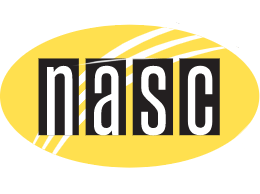Why Choose Regenerative Farming?

As a dog owner you want the best food possible for your dog … and you can choose foods that are good for the planet too. Regenerative farming is the key to producing high-quality, nutritious food for your dog while respecting animals and preserving the land as well.
What Is Regenerative Farming?
Regenerative farming is a holistic view of agriculture as it focuses on restoring soil health. Ideally, it’s a mix of microorganisms, plants and animals on farms that create and support healthy soil, strong crops and resilient natural systems … and they don’t require chemicals to manage pests and disease.
Regenerative farming relies on practices like cover cropping, crop rotation, composting, grazing management and no-till, which replenish and restore the soil with nutrients and help retain moisture content. These regenerative agriculture practices also reduce or eliminate the need for synthetic fertilizers and pesticides, and prevent toxic runoff into local water sources.
Regenerative farms often feature diverse crop varieties and pasture land for grazing animals … important factors in creating a healthy ecosystem. Ultimately, these processes increase the production of healthy, safe food and other agricultural products.
Is Regenerative Farming Organic?
It can be but organic farming follows a strict set of standards overseen by the federal government. It’s defined by the USDA as “a production system … that respond(s) to site-specific conditions by integrating cultural, biological, and mechanical processes that foster cycling of resources, promote ecological balance, and conserve biological diversity.” So the foods produced may be organic, but the intent is not to improve the land being farmed.
To be “regenerative organic,” a farm can practice the management principles of regenerative farming to focus on the soil and its health … and meet organic standards as well.
How To Start Regenerative Farming
Each farm or ranch differs in the way it approaches regenerative farming based on unique natural resources, climate, and animal and ecological dynamics of the region, operation and personal situation. Unlike organic certification, there is no standard certification process.
Regenerative farming often begins a step at a time as farmers add regenerative and ecological processes to their farming operations. By taking proactive steps such as reducing tillage intensity, increasing groundcover through cover cropping or agroforestry systems, rotating their grazing livestock and managing pests naturally, farmers can ensure their land will remain productive for future generations. Their goal is sustainability for the future while they produce food that respects the land, animals and the environment.
The Benefits Of Regeneratively Grown Food
Regenerative farming practices support the environment as well as:
- Providing nutrient rich foods. Crops have more nutrients with higher levels of vitamins and minerals.
- Avoiding synthetic fertilizers, so produce is safer.
- Reducing water and fuel use by using natural rainwater instead of irrigation systems powered by fossil fuels like coal or gas.
- Improving animal welfare as livestock are pasture-raised instead of being confined indoors.
- Improving animal health and reducing waste by raising animals on pasture.
Regenerative Farming Yields More Nutrients
A 5 year study done by the University of Washington followed 10 farms in the midwest and eastern US. They grew test crops of an acre of peas, sorghum, corn or soybeans to compare with conventional farming methods. The food grown under regenerative practices contained, on average, more magnesium, calcium, potassium and zinc, more vitamins, including B1, B12, C, E and K; and more phytochemicals. Crops grown on the regenerative farms were also lower in sodium, cadmium and nickel compared to conventionally grown crops.
Studies conducted by Ohio State University showed that regenerative farming restored degraded soils and increased biodiversity. This can improve the ecosystem in areas of pollination and pest control which are essential for crop production.
Additionally, a study published in the journal Nature Communications showed that transitioning even just 1-4% of croplands globally into regenerative agriculture could save 4 million hectares of land from deforestation.
Regenerative Farming Benefits For Dogs
Regenerative farming is good news for people (and their dogs) when they want to avoid the chemicals or additives found in processed dog foods. Raw dog food manufacturers may be the most likely to choose ingredients sourced from regenerative farms. It’s also a growing market for dog owners sourcing regeneratively grown meat, organs and treats for their pets.
Regenerative Farming For Dog Food
Some dry dog food manufacturers are pursuing regeneratively farmed crops but it’s a long-term plan … especially when it’s being done in-house. Regeneratively grown grains and legumes in dry dog foods will see up to 20% higher protein levels than in conventionally grown crops. Additionally, they contain more minerals such as zinc and iron compared to their non-regenerative counterparts.
Disadvantages of Regenerative Agriculture
Regenerative agriculture has these challenges:
- Less industrialization requires higher labor needs.
- Rotation of crops and grazing needs more land.
- Greater financial resources to cover these additional costs.
- A longer timeline before the yield is profitable.
- More crop diversity can mean increased risk of pests and diseases.
Regenerative farmers also lack access to crop insurance for this type of farming. Some farmers are pursuing community-based crop insurance but it may not provide sufficient coverage against large-scale losses due to weather or other factors.
Regeneratively grown products are ethically sourced and nutrient-rich from farms dedicated to protecting the environment and following animal welfare standards. They’re good for you, your dog … and the planet.
Dog owners want the best food possible for their dogs … and they can choose foods that are good for the planet too. Regenerative farming is the key to producing high-quality, nutritious food for your dog while respecting animals and preserving the land as well.
References:
- Montgomery, David, et al. Soil health and nutrient density: preliminary comparison of regenerative and conventional farming. Peer J Journal. 2022 Jan 27;10:e12848.
- Culman, Steve, et al. Protecting and Restoring Soil Resources to Enhance Human and Ecological Health. Research Impact. Ohio State University 2017.
- Van Vliet, Stephan, et al. Health-Promoting Phytonutrients Are Higher in Grass-Fed Meat and Milk. Frontiers In Sustainable Food Systems. Volume 4 - 2020




